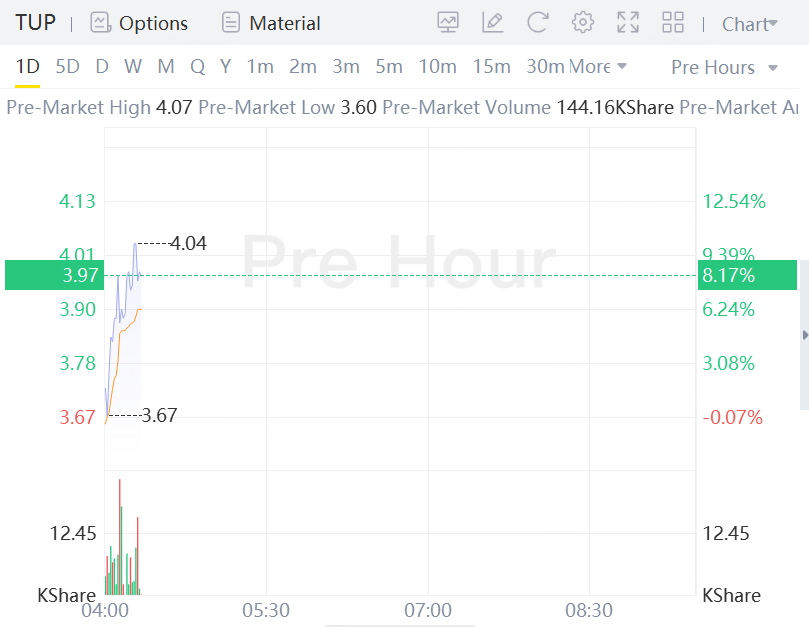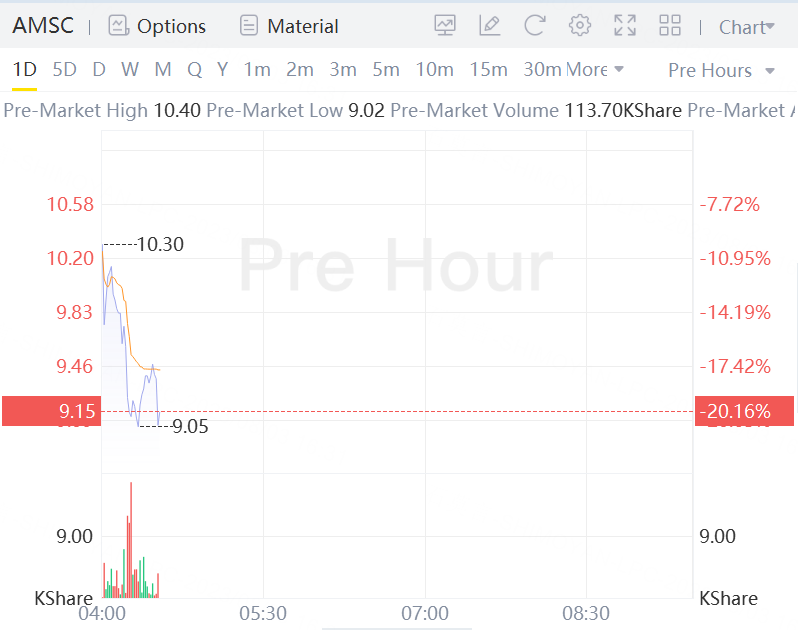Meme stocks mixed in premarket trading on Thursday, with Tupperware stock rising over 8% while American Superconductor dropping more than 20%.
Meme stocks Tupperware, Yellow, AMSC fall on Wednesday amid broad US market slump. Tupperware Brands Corp drops 32.5% Wednesday following 751% surge in the past eight sessions while Power company American Superconductor Corp falls 28% after 60% jump on Tuesday.
All eyes have been on shares of Tupperware Brands Corp. and Yellow Corp. in recent days as the stocks have soared despite a dearth of fresh news in the case of the former, and negative news in the case of the latter.
Shares of the beleaguered maker of iconic food-storage containers enjoyed a record 434% gain in July on no apparent news. Yellow's $(YELL)$ stock has also skyrocketed, despite reports that the trucking company is facing bankruptcy.
Over the weekend the Wall Street Journal reported that the less-than-truckload company has shut down operations as it prepares for bankruptcy. On Monday the International Brotherhood of Teamsters said it was served legal notice that Yellow was "ceasing operations and filing for bankruptcy." MarketWatch has reached out to Yellow with a request for comment.
Set against this backdrop, the surging share prices for Tupperware $(TUP)$ and Yellow have sparked comparisons with the meme stock phenomenon, where discussions on social media can send share prices surging. This trend turned companies such as AMC Entertainment Holdings Inc. $(AMC)$ and GameStop Corp. $(GME)$ into meme stock "darlings" in recent years. But Samantha LaDuc, founder of LaDucTrading.com, says there's a different explanation for what's been happening to shares of Tupperware and Yellow.
"Literally, it's short-covering as the paired trade of long quality, short junk unwinds," she told MarketWatch, via email. "And it typically always precedes volatility."
Short selling of a stock occurs when an investor borrows shares and sells them immediately expecting the price to drop. The shares can then be repurchased and returned to the lender, with the investor pocketing the difference. Although sometimes vilified, short sellers are actually misunderstood, Robert Sloan, managing partner at financial analytics firm S3 Partners and author of "Don't Blame the Shorts," recently told MarketWatch.
In a letter to investors this week, Dan Loeb, the chief executive of the hedge fund firm Third Point, explained that short selling is much more challenging today than it has been historically.
"Fundamental analysis is increasingly taking a back seat to monitoring daily option expiries and Reddit message boards, as evidenced by the numerous short squeezes and manipulations of heavily shorted stocks such as AMC and GameStop in 2021 and others this year," he wrote. "While we have not abandoned short selling, we continue to reduce our single-name short exposure in favor of market hedges and short baskets."
LaDuc explained that in June and July hedge funds aggressively covered shorts in global equities, and also noted the trend of FOMO or 'fear of missing out'.
"We have had the largest six-month increase in leverage on record (according to Goldman), with a clear case of FOMO-the-MOMO [momentum] chase in full view as concentration risk in megacap tech forced a NASDAQ "SPECIAL REBALANCE" to 'down-weight' AAPL, MSFT, GOOGL etc."
Short covering occurs when a person with a short position buys back the shares, ending the short trade, and returns the shares to the seller. With this strategy, the short seller aims to cover after the share price falls and make a profit. They may also cover if the price goes up to limit their losses.
Last week LaDuc told MarketWatch how she was able to anticipate a Tupperware stock spike despite a dearth of traditional market-moving news around the name.
Tupperware's stock has continued its upward trajectory, rocketing again on Tuesday. The stock eventually ended Tuesday's session up 26% at $5.38, with LaDuc warning her clients of the risks involved in a parabolic rally. "I suggested to clients it was likely done and to be very cautious if still long because 'Parabolas are trapped longs that can trigger volatility which can trigger a liquidation event'."



